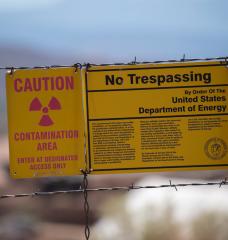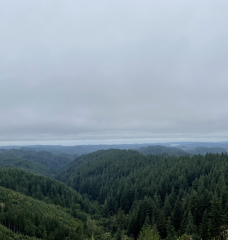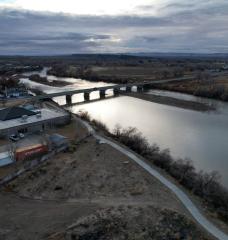
Some comments in the way of an update on the recent Climate Conversations podcast, from a mid-November discussion...
How is it now, more than three months after recording it (~22 weeks after the storm)? The Website status.pr reports that while many services are being restored, as of 20/feb/2018 “AEE Generation” (AEE is PREPA, the electric utility) is 84.6% (vs. pre-storms levels) representing 83.9% of “los abonados,” subscriber accounts. Since most accounts are families or businesses, not at single-occupancy homes, it is likely that one fifth to one quarter (or more) of the population has lived, and still remains, without power (i.e., easily 600,000-800,000 people, or more). What power there is has not been steady, with small and large temporary outages. And the remaining lack of service is very unevenly distributed, with some municipalities having spotty or minimal coverage; some smaller, remote communities may not get electricity back, period. In recent days PREPA warned it was about to reduce its generation capacity reserves –further increasing the exposure to blackouts– to save fuel unless a $1 billion emergency loan was approved for operating expenses, which federal district judge Laura Taylor Swain rejected, approving instead $300 million on Monday February 19.
Once power is back, much economic activity and basic services becomes possible in a wider scale but limited by the quality and reliability that is unlikely to reach and remain at high levels. Another very serious concern is housing and living conditions for a sizable portion of the population (over a third? Or closer to half?). Various different estimates refer to several hundred thousand homes significantly damaged, 70-90,000 destroyed. Many homes were not built “to code,” many had no insurance (hence no remedial assistance now), etc. Coupled with overlapping loss of jobs and income for a large number of people, the next phases of “recovery” will not be a return to “normalcy” for them but rounds of foreclosures and displacement.
I appreciate the opportunity provided me by Tufts’ Global Development and Environment Institute (GDAE) to further explore these multiple dimensions of the crisis and of what “resilience” means in this context in a December policy brief (Puerto Rico, Climatic Extremes, and the Economics of Resilience), and in a recent update in a February 5th talk and presentation). An ongoing conversation on this is relevant not only for Puerto Rico, but also for other Caribbean islands; with some lessons, I think, for vulnerable regions elsewhere including our own.
What I see increasingly clear is the crucial intersection between the quality of governance and institutions (local government, service organizations especially energy utilities, and regulatory bodies) and the framework of transparency and public accountability that enables them, or not; the high levels of poverty and socioeconomic inequality; and the level of quality reporting and information available to the population, as well as their participation in shaping all of the above. And, of course, leveraging the best advancing technological options, especially in renewable and distributed energy sources, storage, efficiency and demand management, etc.
It is clear how the recovery and achievable resilience is limited by high levels of poverty and socioeconomic inequality; as some sectors recover they only can go so far when so much of the population remains in economic survival mode with at best uncertain prospects. The extremely messy technical and political situation surrounding the electric utility PREPA is a huge obstacle as well. PREPA’s internal challenges were clearly laid out in the November 2016 expert report to the PR Energy Commission by Cambridge, MA consultants at Synapse Energy Economics (“PREPA is failing at the basic mandate of an electric utility, which is to safely and reliably supply electricity to its customers. … PREPA’s current state, which is unambiguously one of crisis” – how so in great detail). Highlighting the governance issue, and beyond the handling of the now notorious Whitefish Energy contract and the long delay (nearly 6 weeks) in requesting the activation of mutual assistance programs with the American Public Power Association (APPA) and the Electric Institute (EEI), think about the fate of the Puerto Rico Energy Commission (PREC), created in 2014. The first-ever expert regulatory body for the island’s electricity system, the PREC’s authority to approve or deny rate increases, based on documented justification, and oversight over long-term planning (e.g., leading to the first Integrated Resource Plan, see Synapse report) has been a rare achievement. Yet, one of its three commissioner positions has remained vacant for nearly a year and proposals have been floated and discussed by the PR executive and legislative branches (with hearings in February, including last week) to dilute and reduce its authority and to merge the Commission (as only one member) with other regulatory bodies for telecommunications and public services, etc.
This is astounding (though not surprising), dimming the only shining light in the picture just when most needed. If anything, possibly the most important measure would be to further strengthen the capacity of the PREC and ensure its political independence. Especially when the Governor announced in late January the intention to move toward an 18-month, 3-phase process of “privatization of power generation and a concession, term-defined, of energy distribution and transmission.” This will be very complex, full of politics from the roles that will be played by key players: the island’s executive and legislative branches, the Financial Oversight & Management Board (FOMB), the bankruptcy court and judge Swain, the debt/bondholders; the PREPA/AEE board, management and union. Past history and intense public cynicism do not make for a hopeful process. The well-off and well-connected will do fine, or better. What about Puerto Rican society and the public… what will be the role and participation of other public stakeholders: academic experts, non-profits, think tanks, expert journalists, civil society/citizen action groups, etc.? Regardless of the merits of various private vs. public vs. cooperative models for components of the electricity system, and in light of the rapidly changing energy technologies and markets, most expert studies and discussions of the evolving “utility of the future” point out the key role of properly and smartly designed flexible markets and regulations (see MIT’s own Utility of the Future study of late 2016 and more recent publications like SEPA (Smart Electric Power Alliance)’s “The 51st State Initiative - A Collaborative Community for Defining the Future of the Electric Power Sector” and Rocky Mountain Institute’s Reimagining the Utility). Unfortunately, not the sort of things that powerful lobbyists and many politicians go for (or even know). More likely, the widespread frustration, lack of trust, the enormous needs and the despair, which feed the calls to “do something, anything!” (“sell everything down to the last bolt,” “get their hands out of the pot”) will be manipulated to advance private and/or short-terms interests. How the public interest is represented and enforced is a key question.
If there’s anything the post-María situation illustrates is that achieving resilience is not cheap, except compared to the alternatives. The 2017 hurricane season –the scale, intensity, pace and frequency of the main storms– has practical implications for “resilience building” and preparedness and sets the new standard to prepare for. Well-thought out plans are essential, but equally important is being ready and able to implement them quickly. Investing in improving the lot of the less fortunate will make dealing with the next such crisis much easier and less costly.






